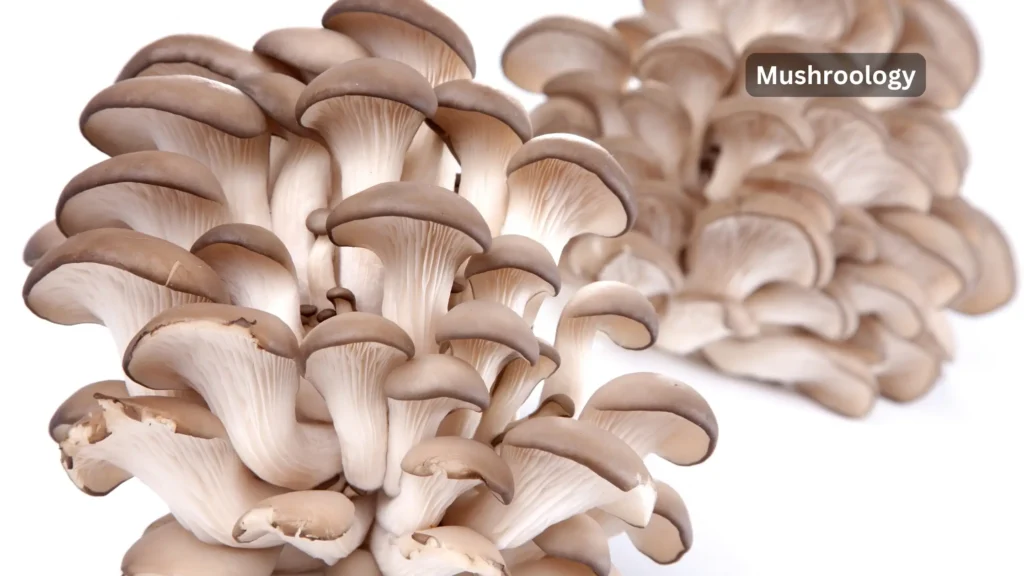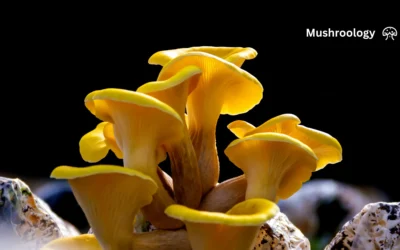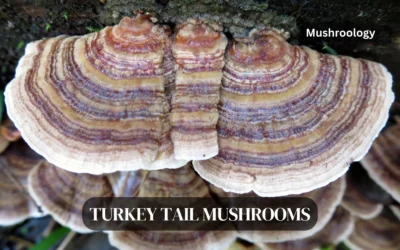What you need to know about cultivating Pleurotus columbinus successfully.
After successfully yielding over 7 kg of blue oysters from a small closet setup last year, I’ve refined the process into the simplest method possible. This guide is built on the best practices from Paul Stamets’ seminal work, the North American Mycological Association (NAMA) standards, and thousands of hours of successful home cultivation—guaranteeing your first harvest.
At a Glance: Blue Oyster Mushroom Cultivation (Featured Snippet Optimization)
| Key Metric | Ideal Range | Beginner’s Best Practice |
| Skill Level | Beginner | Fastest colonizer, highly contamination resistant |
| Time to Harvest | 3-4 Weeks (from inoculation to first flush) | |
| Ideal Temp (Fruiting) | 15-21 * Celsius (60-70^F) | Consistent indoor temperatures (Autumn/Spring) |
| Primary Substrate | Pasteurized Straw Pellets | The most forgiving and accessible substrate |
| Humidity (Fruiting) | 85-95% Relative Humidity | Daily misting (3-4 times) or humidity tent |
| Lighting | Indirect light | Standard ambient room light (no direct sun) |

🌟 Why Choose Blue Oyster Mushrooms (Pleurotus columbinus)?
Blue oyster mushrooms (Pleurotus columbinus) are perfect for beginners because they’re forgiving, fast-growing, and thrive in cooler conditions that most homes can provide naturally.
- Tolerance: They tolerate temperature swings better than most species.
- Speed: They produce beautiful, fast-growing clusters in just 7-14 days after pinning begins.
- Contamination Resistance: The North American Mycological Association (NAMA) recommends blue oysters because they resist contamination better than sensitive species like shiitake or lion’s mane. You’ll see results faster, which keeps you motivated through the entire learning process.
🛠️ Essential Equipment Checklist
You don’t need expensive equipment to start growing blue oyster mushrooms at home. Focus on cleanliness and proper pasteurization.
Essential Supplies for Beginners
- Growing Containers: 19-liter (5-gallon) plastic storage bins with tight-fitting lids OR clear plastic storage bags
- Misting: Spray bottles for misting (500-1000 ml or 16-32 oz capacity).
- Substrate (The Food):
- Straw Pellets (Recommended): 2.3-4.5 kg (5-10 pounds) per growing cycle.
- Alternative: Hardwood sawdust or fresh coffee grounds (must be supplemented).
- Pasteurization Equipment: Large pot for boiling water (minimum 7.6-liter or 8-quart capacity), a mesh strainer, and clean towels.
Optional Tools (Recommended by Cornell Cooperative Extension)
- Monitoring: Digital thermometer/hygrometer combo ($15-25) for precise climate control.
- Advanced Sterilization: Pressure cooker (for grain spawn or advanced substrate mixes).
- Timer: For scheduled misting, ensuring consistency.
🔪 The 4-Week Blue Oyster Mushroom Growing Cycle (Step-by-Step)
Getting your substrate right and maintaining cleanliness is the key to success. This numbered list is optimized for clarity and instructional snippets.
Phase 1: Substrate Preparation and Inoculation (Week 1)
1. Pasteurize Your Primary Substrate (Straw)
Pasteurization kills competing organisms while leaving beneficial bacteria that blue oysters thrive on.
- Boil 7.6-11.4 liters (2-3 gallons) of water in your largest pot.
- Add 2.3 kg (5 pounds) of straw pellets to a mesh bag (or pillowcase).
- Submerge the bag in boiling water for 45–60 minutes (the pasteurization process).
- Remove and Drain: Drain the straw until it is cooled to room temperature . It must pass the moisture test (see Step 2).
2. Test the Moisture Content
Your substrate should feel like a wrung-out sponge. When you squeeze a handful, you should get only 1-2 drops of water, not a stream. Too wet creates anaerobic conditions that kill the mycelium.
3. Acquire Quality Spawn
Purchase quality spawn from reputable suppliers (like Field & Forest Products).
- Check: Fresh spawn should smell earthy, not sour or ammonia-like.
- Store: Keep refrigerated and use within 2-3 weeks.
4. Inoculate the Substrate
This step determines whether you grow mushrooms or mold—maintain absolute cleanliness.
- Clean Area: Work away from air vents and wash hands thoroughly with antibacterial soap.
- Mix: Mix 454 g (1 pound) of spawn with 2.3 kg (5 pounds) of prepared (cooled) substrate. Use a 20% inoculation rate by weight.
- Pack: Distribute the spawn evenly and pack the mixture loosely into your growing containers or bags.
Phase 2: Colonization (Weeks 1-2)
5. Colonize the Substrate
The mycelium (the mushroom root network) is taking over the food source.
- Conditions: Keep containers sealed, dark, and maintain a consistent temperature of 18-21 C (65-70F) Do not mist.
- Check: Inspect daily for white, cottony mycelium growth spreading through the substrate.
- Troubleshoot: If you see green or black mold, immediately remove affected areas and improve cleanliness in your setup.
Phase 3: Pinning and Fruiting (Weeks 3-4)
6. Initiate Pin Formation (The Shock)
Around Week 3, the mycelium is ready to fruit. You must “shock” it to encourage pinning.
- Conditions Shift:
- Increase FAE: Increase air exchange to 4-6 times daily (open containers/cut holes).
- Reduce Temp: Reduce the temperature slightly to 15-18C (60-65F) for 48 hours.
- Add Light: Provide indirect light 8-12 hours daily (no direct sun).
7. Manage Temperature and Humidity
Maintain stable conditions during fruiting for successful development. The University of Minnesota Extension emphasizes consistency here.
- Humidity Control: Maintain $85-95% relative humidity. Mist the container walls and air 3-4 times daily, avoiding direct spray on the tiny pins.
- Airflow: If mushrooms grow tall and skinny, it indicates insufficient air exchange—double your FAE frequency.
8. Harvest the First Flush (Week 4)
Mushrooms double in size every 24-48 hours once fully formed. Timing is crucial for flavor and texture.
- Optimal Timing: Harvest when the caps have flattened out but the edges have not yet curled upward. The blue color should be vibrant.
- Technique: Cut the entire cluster at the base of the substrate using a sharp, clean knife. Do not pull, as this damages the underlying mycelium and reduces future yields.
- Size Guideline: Individual caps taste best when 5-10 cm (2-4 inches) in diameter.
Phase 4: Second and Third Flushes (Weeks 5+)
9. Rest and Rehydrate the Substrate
Most substrates produce 2-3 flushes of mushrooms over 6-8 weeks.
- Rest: Stop misting for 7-10 days to let the substrate recover. Maintain 15-18C (60-65F)
- Clean: Remove all mushroom debris and old stems.
- Resume: Resume misting and FAE when new pin clusters appear for the second flush.
10. Store Your Harvest
Fresh blue oyster mushrooms keep 5-7 days refrigerated in paper bags.
- Note: The USDA recommends against plastic storage, which causes rapid deterioration.

💡 Beyond the Basics: Culinary and Advanced Use
This information adds value by addressing the why and what next after harvesting.
🍴 Culinary Uses and Health Benefits
Blue oyster mushrooms are highly prized not just for ease of growth but for their culinary profile.
- Flavor Profile: Mild, savory, and slightly nutty, often described as having a subtle seafood note when cooked.
- Best Uses: Excellent sautéed with garlic and butter, stir-fried, or deep-fried into ‘oyster mushroom calamari’.
- Nutritional Value: They are a fantastic source of protein, B vitamins (especially Niacin), and contain Lovastatin, a compound linked to lowering cholesterol. They offer significant nutritional density for home growers.
♻️ Substrate Recycling (Closing the Loop)
What do you do with the substrate after the final flush?
- Composting: Spent substrate is an excellent source of organic matter. Mix it directly into your garden beds or compost pile. The high carbon and nitrogen content improves soil structure.
- Outdoor Patch: You can bury the spent block outside in a shady, moist area. This often leads to a surprise outdoor flush during favorable weather (Spring or Autumn), utilizing the remaining nutrients.
❓ Frequently Asked Questions (FAQ)
Q: How long does it take to grow blue oyster mushrooms from start to harvest?
A: Most blue oyster mushroom growing cycles take 3-4 weeks (21-28 days) from inoculation to first harvest under optimal conditions of 15-21C (60-70F).
Q: What’s the best growing method for beginners?
A: Start with the plastic bag method using pasteurized straw pellets. You’ll need about 2.3 kg (5 pounds) of substrate and 454 g (1 pound) of spawn for your first attempt.
Q: How much can I expect to harvest from 2.3 kg of substrate?
A: Well-managed substrate typically produces 0.9-1.4 kg (2-3 pounds) of fresh mushrooms across 2-3 flushes over 6-8 weeks, representing a 40-60% biological efficiency.
Q: Do I need special equipment to maintain humidity?
A: No. Basic hand misting with a spray bottle 3-4 times daily works fine for beginners, helping you maintain the necessary 85-95% humidity inside your growing chamber.
Safety Considerations for Home Mushroom Cultivation
- Never eat mushrooms you can’t identify with $100\%$ certainty.
- Buy spawn only from reputable commercial suppliers like Field & Forest Products.
- Maintain clean growing conditions to prevent harmful bacteria.
The North American Mycological Association emphasizes that home cultivation is much safer than foraging, since you control the entire growing process from sterilized substrate to harvest.
Your next step: Purchase your mushroom spawn, gather your straw pellets, and schedule your first pasteurization day. You are now fully equipped with both metric and imperial measurements to succeed!
Helpful resources for families and beginners
- North American Mycological Association (NAMA)
- Field & Forest Products – spawn supplier
- “Growing Gourmet and Medicinal Mushrooms” by Paul Stamets
- Penn State Extension Mushroom Program
- Cornell Cooperative Extension mushroom guides





